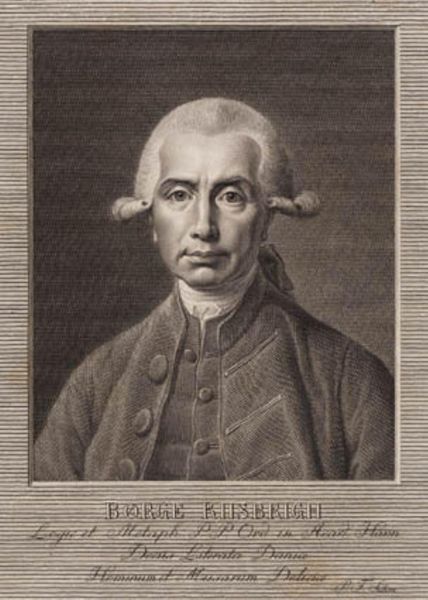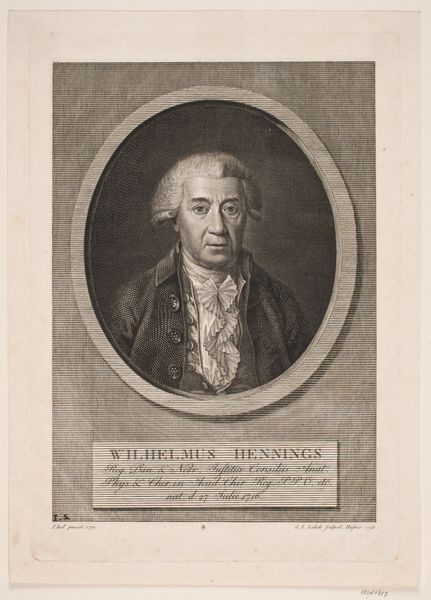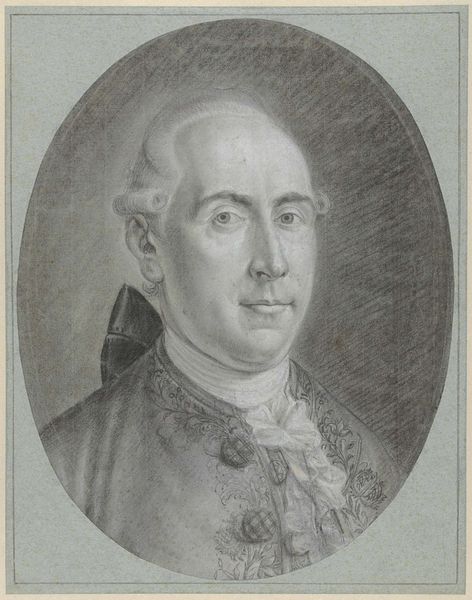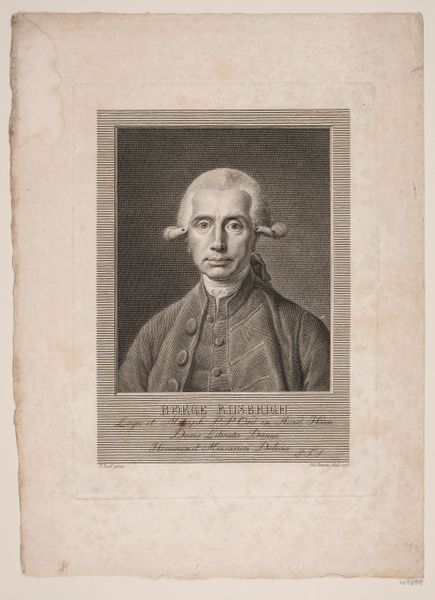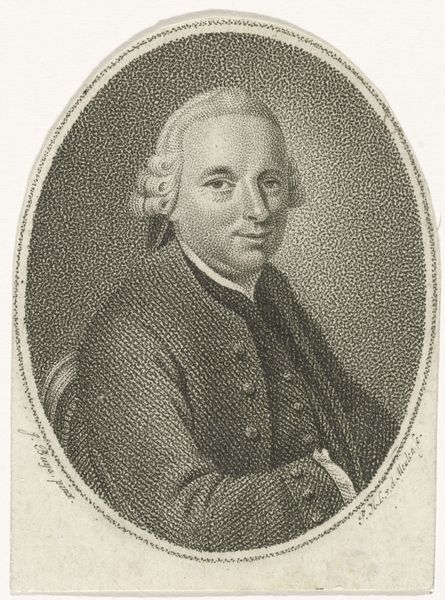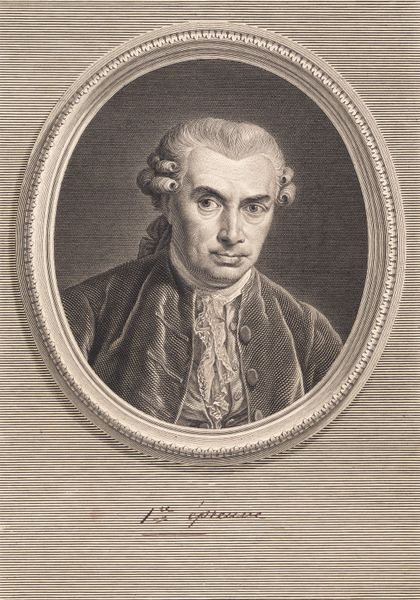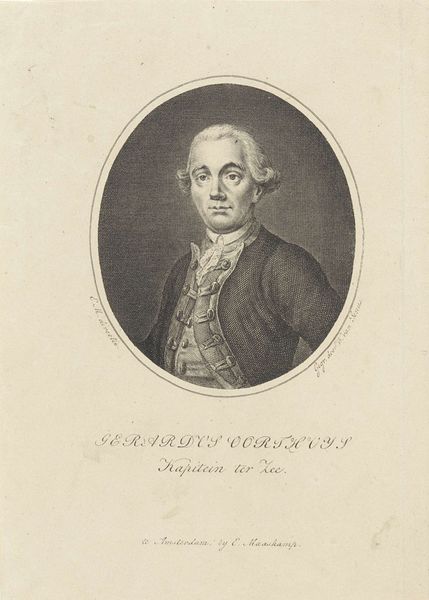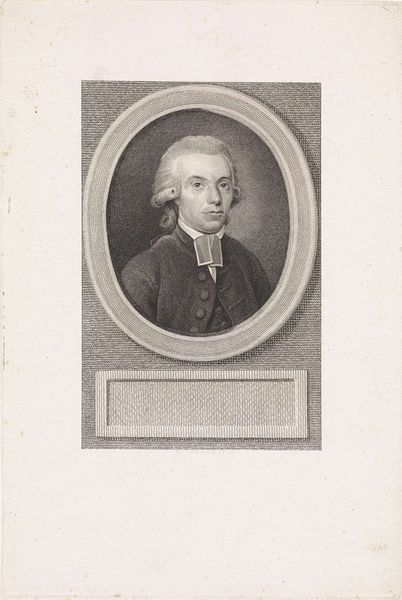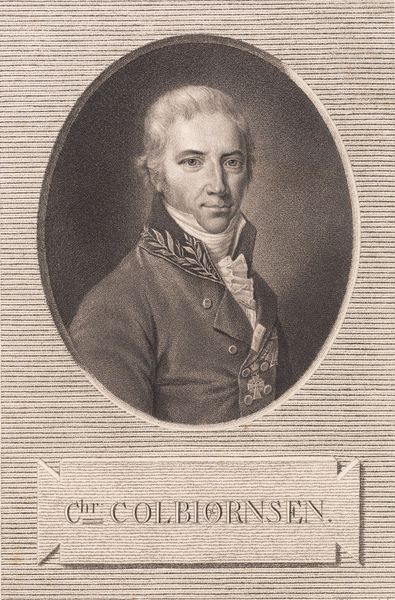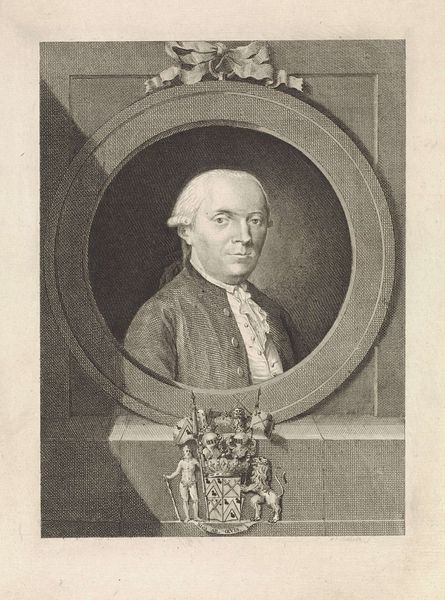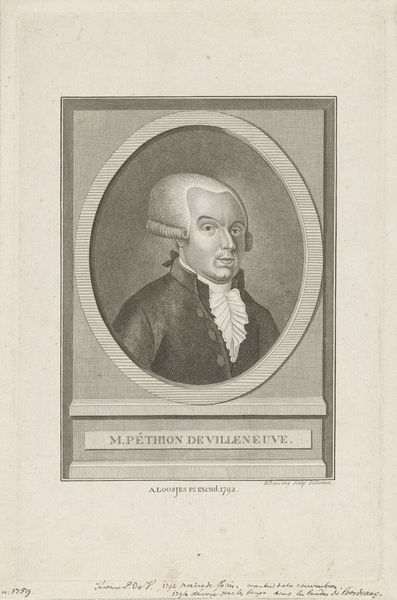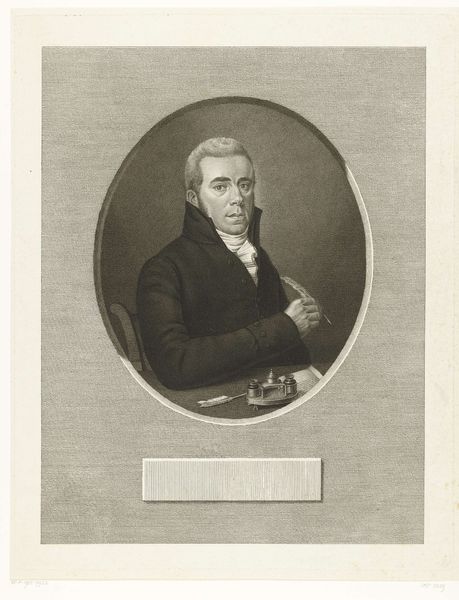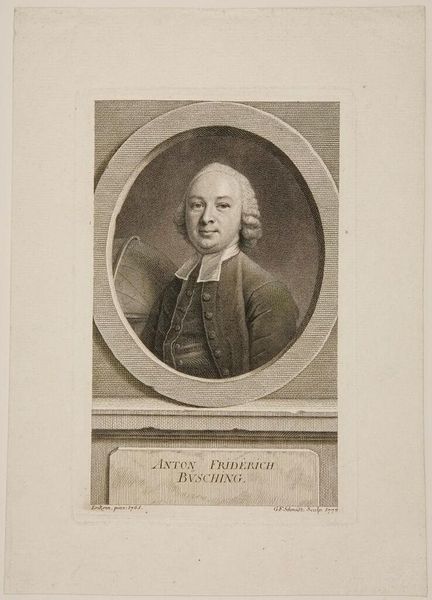
print, etching
#
portrait
#
neoclacissism
#
portrait
# print
#
etching
#
figuration
Dimensions: 268 mm (height) x 202 mm (width) (bladmaal), 260 mm (height) x 191 mm (width) (plademaal), 221 mm (height) x 158 mm (width) (billedmaal)
Curator: This is J.F. Clemens' etching from 1798, titled "Børge Riisbrigh," now residing at the Statens Museum for Kunst. Editor: The first thing that strikes me is the fine level of detail achieved using the etching technique; there’s such control to modulate the light. The process has beautifully rendered this gentleman's jacket in particular. Curator: Absolutely. Consider how the neoclassical style, which was popular during the late 18th century, influenced portraiture. We see the emphasis on clarity, order, and an idealized representation of the subject that echoed Enlightenment values. Editor: It's fascinating to think about the physical labor that goes into producing such detail. And to think of the skill to not just replicate an image, but to work with acid and metal to pull out a representation. Were these types of prints widely circulated at the time? Curator: Exactly. Prints were often commissioned as official or commemorative portraits to serve as public symbols of status and respectability within society. Note the Latin inscription beneath the portrait. Editor: It speaks volumes about who had access to knowledge and how images served as markers of social standing and political sway. Curator: Indeed. And that this was not just *any* image but one approved and sanctioned is notable. One should always consider how institutions and individuals are empowered to craft these depictions and circulate them in ways that serve their interests. Editor: Yes. When you consider it, the material reality of an etching is its very purpose: mass reproduction of image and ideology in the service of power. Curator: Ultimately, this portrait offers a window into the values of late 18th-century Danish society. Editor: From the precision of the etching to the careful presentation of the subject, we find how status was produced and projected at the time.
Comments
No comments
Be the first to comment and join the conversation on the ultimate creative platform.
